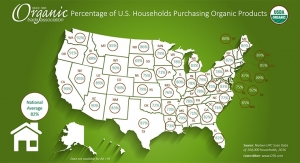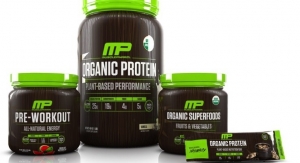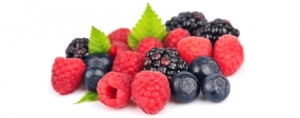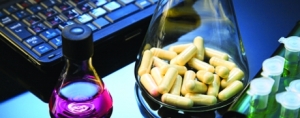At that point in time, the analytical techniques and analytical standards were not available to quantitate the 5,000+ individual compounds present in botanicals and much less was known about their absorption and metabolism. Several antioxidant capacity methods were available and more have been developed since that time to measure compounds that basically undergo redox type reactions, although different radical or oxidant sources were used in the different assays1. An advantage of the ORAC method was that it uses a biologically relevant free radical source, the peroxyl radical, which is one of the more common free radicals found in the human body.
As the concept of antioxidants in foods became better understood and accepted over time, considerable data were obtained using different antioxidant assays because there was no one standardized assay. ORAC became one of the predominant methods used and the published data was assimilated into a database that USDA made available on the Internet. However, in 2010, USDA removed the database from its website stating there is “mounting evidence that the values indicating antioxidant capacity have no relevance to the effects of specific bioactive compounds, including polyphenols on human health.” Updated ORAC data is currently located at www.oracdatabase.com.
Health Effects
However, since then, there have been several manuscripts published using the USDA database demonstrating that increased dietary intake of bioactives/antioxidants measured using ORAC or Total Phenolics by the Folin assay was associated with lower risk of ischemic stroke2, stroke3, myocardial infarction4, decreased mortality in older adults5 and negatively associated with hypertension in type 2 diabetic subjects. Diets rich in polyphenols improved dyslipidemia and reduced postprandial oxidative stress6 and increased antioxidant capacity7.
It seems clear that dietary bioactives/antioxidants have health effects in vivo. Although antioxidant capacity assays provide measures of the relative amounts of ‘bioactives’ in botanicals, the bioactivity in vivo may not be via strictly antioxidant mechanisms. It is important to realize also that most of the antioxidant phytochemicals in botanicals can be metabolized by gut microbiota and/or metabolized and conjugated during the absorption process8, 9.
During aerobic metabolism in normal cells, adenosine triphosphate is generated and oxygen is reduced to water. However, this process is not perfect and as a result toxic byproducts in the form of reactive oxygen species (ROS), reactive nitrogen species (RNS) and reactive chlorine species (RCS) are produced.
Scavenging & Oxidative Stress
Antioxidants scavenge and minimize the formation of reactive species. In the healthy human body, there is an approximate balance between production of reactive species and antioxidants. However, serious imbalance between production of reactive species and antioxidants often occurs, and in most cases, reactive species are over produced. This imbalance is called oxidative stress, which is believed to be associated with the pathogenesis of human disease.
One of the most common and important ROS is the superoxide anion. The tissue toxicity of superoxide anion seems to be based on its direct reactivity with numerous types of biological molecules (lipid, DNA, RNA, catecholamines, steroids, etc.). Superoxide can directly initiate lipid peroxidation, producing peroxyl radicals, another ROS.
Some of the antioxidant properties of flavonoids are effective through their scavenging of the superoxide anion radical1. Superoxide anion radicals are biologically quite toxic but can have beneficial effects. In the phagocytes of the immune system, superoxide anion is produced in large quantities for use in killing invading microorganisms.
Although superoxide anion production is essential for bacterial cell killing, the subsequent release of hydrogen peroxide and other additional reactions produces more dangerous ROS, including singlet oxygen and the hydroxyl radical. Although not a free radial, singlet oxygen can be formed in some radical reactions and can also lead to others since it is one of the most active intermediates involved in biochemical reactions. Singlet oxygen can react with many kinds of biological molecules such as DNA, proteins and lipids.
An important mechanism of superoxide anion toxicity is its fast reaction with the free radical nitric oxide to generate the RNS peroxynitrite. Much of nitric oxide- and superoxide-dependent cytotoxicity resides on peroxynitrite, which affects mitochondrial function and triggers cell death via oxidation and nitration reactions. Hypochlorite is another immunologically relevant ROS, which is formed from myeloperoxidase/hydrogen peroxide dependent oxidation of chloride ion. Hypochlorite is more reactive than hydrogen peroxide but less reactive than hydroxyl radicals.
ORAC vs. ORAC-MR
The capability of using different free radical sources is an advantage of the ORAC method. In addition to the original ORAC assay using the peroxyl radical developed by Prior, Ou and Huang, et al10, 11, a new panel of ORAC assays has been developed by Dr. Boxin Ou’s group at International Chemistry Testing (Milford, MA), using the ROS, superoxide anion, hydroxyl radical and singlet oxygen, and the RNS peroxynitrite and the RCS hypochlorite.
This panel of assays has led to the term, Oxygen Radical Absorbance Capacity using Multiple Radicals (ORAC-MR), which is a sum of the antioxidant capacity against six of the most predominant reactive species found in the human body: ROS (peroxyl radical, hydroxyl radical, superoxide anion, singlet oxygen), RNS (peroxynitrite) and RCS (hypochlorite).
Assessing the antioxidant capacity of a given food by means of an in vitro assay does not imply the total activity of its antioxidant components will become bioavailable to the organism. However, using the global index of ORAC-MR represents a practical form to assess the potential that a given food may have to impact the in vivo antioxidant status of the organism either by direct action or through indirect actions.
Lycopene, the red pigment in tomatoes, and other carotenoids are efficient in quenching singlet oxygen12. However, utilizing ORAC-MR, other compounds and foods are being identified that have significant capacity to quench singlet oxygen efficiently13. Because superoxide anion seems to be pivotal in the formation of other free radicals, ORAC-MR provides, for the first time, the opportunity to identify foods that have the potential for efficient quenching of superoxide anion and thereby decreasing the oxidative load from other free radicals.
Figure 1 represents the distribution of antioxidant activity against common radicals; clearly ORAC-MR is an ultimate global index to antioxidant capacity measurement. ORAC-MR data will be added to the website www.oracdatabase.com as it becomes available.
Figure 1. Distribution of Total Antioxidant Activity of a Grape Seed Extract Measured By ORAC-MR
There remains a critical interest in and need for valid, reliable in vitro antioxidant methods, whether for R&D, product development, quality control or as a precursor to further investigation. ORAC-MR brings additional analytical power to a method which, used properly, adds value to a wide range of food and nutrition applications.
About the authors: Boxin Ou, PhD, is chief scientist of International Chemistry Testing, LLC, Milford, MA. Dr. Ou is well known in the area of antioxidant science and is the inventor of the modern ORAC assays. He can be reached at 508-422-9288; E-mail: bou@ichemtesting.com. Dr. Boris Nemzer is director of research and development and quality assurance at FutureCeuticals, Inc (Momence, IL). His work focuses on identification and chemical composition of natural products and he spearheads one of the industry’s most advanced botanical identification programs. Dr. Nemzer is an Adjunct Professor in the Department of Food Science and Human Nutrition at University of Illinois at Urbana-Champaign. He can be reached at 815-507-1427; E-mail: bnemzer@futureceuticals.com.
References
- Gulcin I. Antioxidant activity of food constituents: an overview. Arch Toxicol; 2012; 86(3): 345-391.
- Del Rio D, Agnoli C, Pellegrini N, Krogh V, Brighenti F, Mazzeo T et al. Total antioxidant capacity of the diet is associated with lower risk of ischemic stroke in a large Italian cohort. J Nutr; 2011; 141(1): 118-123.
- Rautiainen S, Larsson S, Virtamo J, Wolk A. Total antioxidant capacity of diet and risk of stroke: a population-based prospective cohort of women. Stroke; a journal of cerebral circulation; 2012; 43(2): 335-340.
- Rautiainen S, Levitan EB, Orsini N, Åkesson A, Morgenstern R, Mittleman MA et al. Total Antioxidant Capacity from Diet and Risk of Myocardial Infarction: A Prospective Cohort of Women. Am. J. Med.; 2012; 125(10): 974-980.
- Zamora-Ros R, Rabassa M, Cherubini A, Urpí-Sardà M, Bandinelli S, Ferrucci L et al. High Concentrations of a Urinary Biomarker of Polyphenol Intake Are Associated with Decreased Mortality in Older Adults. J. Nutr.; 2013; 143(9): 1445-1450.
- Annuzzi G, Bozzetto L, Costabile G, Giacco R, Mangione A, Anniballi G et al. Diets naturally rich in polyphenols improve fasting and postprandial dyslipidemia and reduce oxidative stress: a randomized controlled trial. The Am. J. Clin. Nutr. 2014; (in press): http://dx.doi.org/10.3945/ajcn.3113.073445.
- Snyder SM, Reber JD, Freeman BL, Orgad K, Eggett DL, Parker TL. Controlling for sugar and ascorbic acid, a mixture of flavonoids matching navel oranges significantly increases human postprandial serum antioxidant capacity. Nutrition research (New York, NY); 2011; 31(7): 519-526.
- Del Rio D, Borges G, Crozier A. Berry flavonoids and phenolics: bioavailability and evidence of protective effects. Br J Nutr; 2010; 104 Suppl 3: S67-90.
- Williamson G, Clifford MN. Colonic metabolites of berry polyphenols: the missing link to biological activity? Br J Nutr; 2010; 104 Suppl 3: S48-66.
- Ou B, Hampsch-Woodill M, Flanagan J, Deemer EK, Prior RL, Huang D. Novel fluorometric assay for hydroxyl radical prevention capacity using fluorescein as the probe. Journal of Agriculture and Food Chemistry; 2002; 50(10): 2772-2777.
- Ou B, Hampsch-Woodill M, Prior RL. Development and validation of an improved oxygen radical absorbance capacity assay using fluorescein as the fluorescent probe. Journal of Agriculture and Food Chemistry; 2001; 49(10): 4619-4626.
- Bohm F, Edge R, Truscott TG. Interactions of dietary carotenoids with singlet oxygen (1O2) and free radicals: potential effects for human health. Acta Biochim Pol; 2012; 59(1): 27-30.
- Prior RL. Antioxidant (ORAC)/Bioactives Content of Foods. In. http://oracdatabase.com, 2013.

















